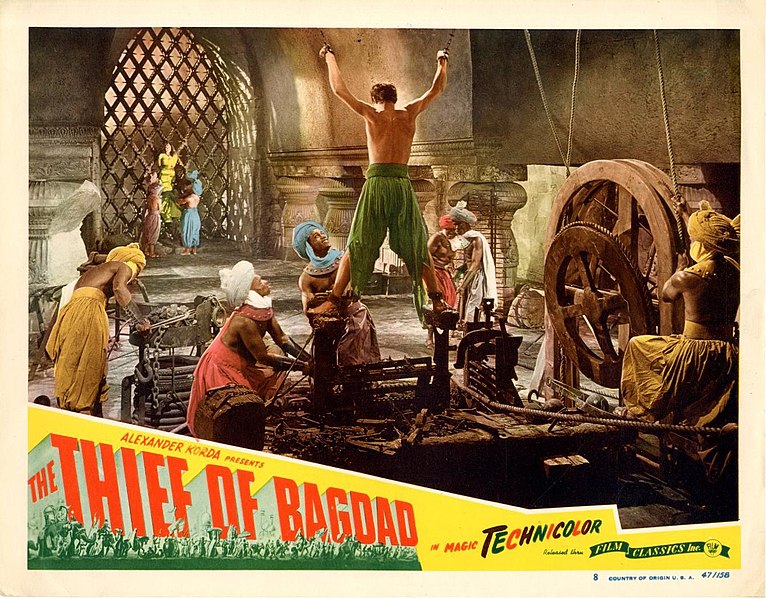L'esdeveniment del so i del color.
The 1930s was a decade of political turmoil and economic problems; the Great Depression had affected the entire world, and Europe was dealing with both the fallout of World War I and the economic hardships of the time, both of which resulted in the rise of fascist political movements. The uncertainty of the era resulted in widespread popularity of fantastical, escapist fare. Swashbuckling adventures and the safe scares of the Universal Horror films were highly successful during this period.
Many full-length films were produced during the decade of the 1930s. Sound films – the so-called "talkies" – were a global phenomenon by the early 1930s. Advances in color film included Technicolor and Kodachrome.
1930 marks the start of what is considered to be the 'golden age' of Hollywood, a period which lasted through at least the 1940s. The studio system was at its highest in the 30s, with studios having great control over a film's creative decision. This included the creation of the Hay's Code, which was the first large scale attempt at organized censorship of Hollywood films.
This was also a decade in which many memorable stars made their careers and saw their earliest starring roles.
Technicolor

By the 1940s, Hollywood's effects specialists had over a decade of studio experience. Technicolor had been especially challenging but faster film introduced in 1939 began to make Technicolor a viable option for studio production. Rear projection in color remained out of reach until Paramount introduced a new projection system in the 1940s. New matte techniques, modified for use with color, were for the first time used in the British film The Thief of Bagdad (1940). However, the high cost of color production in the 1940s meant most films were black and white.
Remakes
Following the switch to talking movies c. 1926/1927, many classic films were remade in the 1930s (and later). These include Alice In Wonderland (1933), Cleopatra (1934), and The Prisoner of Zenda (1937). Among the numerous remakes and new films were the 'monster movies', with a wide spectrum of stereotypical monsters. Given that many of these films were produced by Universal, they are regarded as part of the 'Universal Horror' genre. The first of these films debuted in 1931, and consisted of Dracula, Frankenstein, plus Dr. Jekyll and Mr. Hyde, then a 1932 trio with The Mummy, Vampyr, and White Zombie, followed by a 1933 trio of King Kong, The Invisible Man, and Mystery of the Wax Museum. In 1935, appeared Werewolf of London and The Raven leading to 1939's The Hunchback of Notre Dame.
Stars
The 1930s saw the rise of some of the best known performers in acting
and film history. The aforementioned Dracula and Frankenstein films both
launched the careers of Bela Lugosi and Boris Karloff, respectively; the two men would spend much of the decade starring in Universal Horror films. Actor Errol Flynn, best known for his role as Robin Hood, saw his first starring part in Captain Blood. The Marx Brothers, making their debut at the end of the silent era, rose to fame in the 1930s. The meteoric but short film career of Jean Harlow, The Blonde Bombshell, was completely contained in the 1930s. Fred Astaire, with his frequent partner Ginger Rogers, revolutionized film musicals. With charm and a "distinctive kind of nonmacho masculinity", Cary Grant became the decade's "epitome of masculine glamour". Other stars of this era included Clark Gable, Katharine Hepburn, child star Shirley Temple, Spencer Tracy, and Mae West.
A number of actors from the previous decade continued to be well regarded, such as Charlie Chaplin and Greta Garbo.
Hundreds of full-length films were produced during the decade of the 1940s. The great actor Humphrey Bogart made his most memorable films in this decade. Frank Capra's masterpiece It's a Wonderful Life and Orson Welles's masterpiece Citizen Kane were released. Citizen Kane made use of matte paintings, miniatures and optical printing techniques. The film noir genre was at its height. Alfred Hitchcock made his American debut with the film Rebecca, and made many classics throughout the 1940s. The most successful film of the decade was Samuel Goldwyn's The Best Years of Our Lives; the film was directed by William Wyler, and starred Fredric March, Myrna Loy, Dana Andrews, Teresa Wright, Virginia Mayo, and Harold Russell. The film won nine Academy Awards.
Hollywood films in the 1940s included morale films for the those serving in World War II and their families. War films
made extensive use of models and miniature photography. New techniques
developed to realistically depict naval battles were used in films like Thirty Seconds Over Tokyo (1944) and Ships with Wings (1942). In Mrs. Miniver
(1942) a technique using systems of wires was used to depict two dozen
model aircraft taking off in precise formation. Miniature explosions
were needed for the destruction of models.